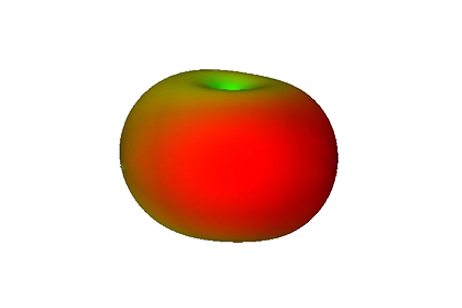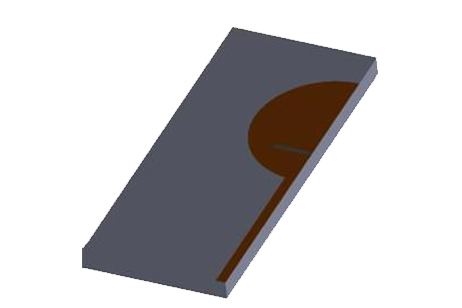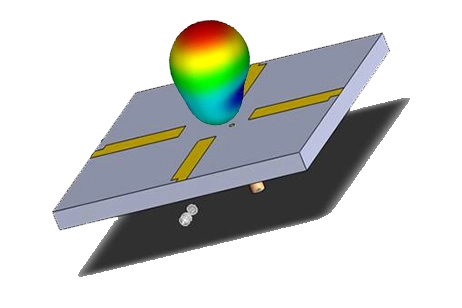Optimizing a Single-Feed Microstrip Antenna for Dual-Band Performance
The structure's mesh is more detailed around the port area, allowing for precise simulation results. Users can rely on HFWorks' default meshing, which intelligently adjusts to the structure's dimensions for an optimally configured mesh. However, users have complete control over the mesh's overall size and can specify finer meshing for areas they deem critical to the structure's performance.
.jpg)
Figure 2 - Mesh of the structure
Simulation
We initiate an antenna analysis using a fast sweep plan, targeting a center frequency near a resonance mode. Initially focusing on return loss measurements, we can increase the steps for Theta and Phi to streamline computations. Leveraging the antenna's symmetry, introducing a Perfect Magnetic Conductor Symmetry (PMCS) plane to bisect the triangle into identical halves will further decrease simulation time, optimizing efficiency without compromising precision.
Loads/ Restraints
As outlined in [1], the feed must be linked to the patch using an SMA connector, allowing for custom construction while adhering to the specified dimensions.
Following this, mesh preparation is crucial as it reflects the simulator's perception of the shape. For accurate representation of the spurs, fine mesh control is essential in those areas. It's important to avoid excessive meshing on non-critical surfaces to prevent unnecessarily prolonged simulation times.
Results
To verify the simulation's precision, examining the return loss curve is instructive. This curve demonstrates the simulator's ability to accurately identify the two resonance modes. Initially, we utilized a fast sweep plan for this analysis, despite discrete sweep offering higher accuracy. The accompanying figures compare the simulated and actual measurement curves, illustrating the simulation's effectiveness.
.jpg)
Figure 3 - Simulated (Red) and Measured (Black) return loss
.jpg)
Figure 4 - simulated return loss (HFWorks)
Conclusion
This application note introduces a single-feed microstrip antenna optimized for GSM bands (900/1800 MHz), exhibiting simulated and measured results for return loss and antenna metrics. Originally designed for 1.8 GHz resonance, the addition of spurs enables dual-band functionality by introducing a secondary resonance at 0.8 GHz. HFWorks' simulation aligns closely with measured data, ensuring reliability. Detailed meshing around the port area enhances precision, with control over mesh size for critical areas. Antenna analysis employs a fast sweep plan, emphasizing return loss measurements. Utilizing Perfect Magnetic Conductor Symmetry optimizes simulation efficiency without compromising accuracy. Results confirm the simulator's ability to identify resonance modes accurately. Figures compare simulated and measured return loss curves, affirming simulation effectiveness. This study elucidates the antenna's performance, offering insights for GSM and GPS applications.
[1] A Triple Band Antenna for GSM and GPS Application Min Sze Yap, Lenna Ng, and Sheel Aditya 2003 IEEE




